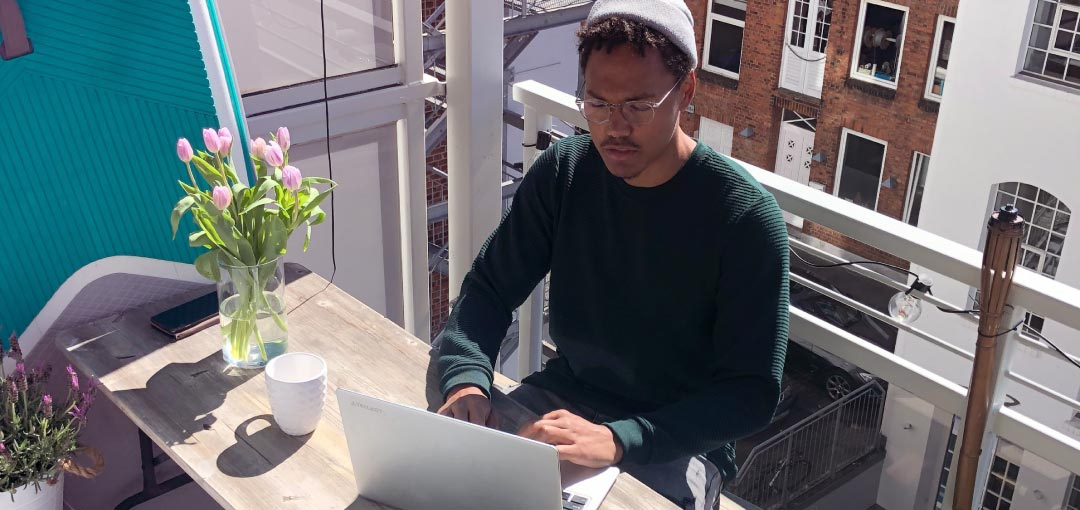WHAT TO DO BEFORE, DURING AND AFTER A VIRTUAL JOB INTERVIEW
SEPTEMBER 07, 2021

KEY POINTS:
- Test your setup and practice before your interview
- Be sure you are familiar with all the tools and features of different communication platforms
- Research about the company well and try to anticipate any potential questions
- Be fully present during the interview - and be yourself
- Follow up with your interviewer after to thank them for their time
Owing to the worldwide pandemic, the work environment has shifted towards the virtual sphere, and that also includes the usual hiring process. Virtual interviews are now becoming the norm in screening potential employees, and would likely resume even after COVID-19 as our world continues to become more and more digital.
There is not much difference between a virtual interview and a regular interview aside from how the interview was conducted. However, there are some considerations that you may want to take into account when attending a virtual interview.
Test your setup
Your device, camera, microphone, and internet connection determine whether the employer would see you on the other side of the screen as a possible hire or as a glitchy, lagging figure with distorted audio. Test run your setup to ensure that everything is working, as well as plan out some countermeasures in case things don’t go as expected. Maybe reserve a spare laptop or a backup data connection just in case your Wi-Fi may fail you.
Now that face-to-face has become screen-to-screen, make sure that what your employer sees on their screen is presentable. Choose an appropriate area away from possible noises or distractions, preferably with a plain background. Make sure that the lighting from windows or other sources does not interfere negatively with your video feed. Keep things tidy and orderly in the background to make a good impression.
Familiarize yourself in a virtual environment
Learn how to use virtual platforms like Microsoft Teams, Zoom, Google Meet, etc., and its basic functions and requirements. You wouldn’t want to be caught unaware when your employer asks you to screen-share your portfolio and you don’t know how.
For some, the idea of talking to a screen may feel foreign, and that unfamiliarity can exhibit itself during the interview. You may find yourself looking away from the camera far more often than you’d like, slouch back onto your chair, or have your voice trail off or be too loud. A way to remedy this is to record yourself doing a mock interview (or just talking to the camera) and replay the footage to see what you need to work on.
Research and anticipate
Now that we have addressed the preparation, the next step is working on the interview. Learn as much as you can about the company you’re applying to, the specifics of your job post, possible interview questions they may need you to answer, as well as questions you may want to ask your employer about. Prepare your answers in advance but don’t memorize them, as rattling on pre-made answers will make you seem rehearsed and ingenuine.
Have appropriate attire ready for the interview. Not only does this make a good impression on your employer, but it also helps you get into “professional mode,” which can be hard sometimes inside the comforts of your own home.
It’s also a good idea to have any needed documents or notes near you or saved on your computer in case you or your employer needs them.
The actual interview
Be cordial and confident. Speak in a clear, distinct voice. It helps you gain confidence as well as help your interviewer understand what you are saying better through the call. Sit up straight, and be at eye level with the camera to simulate eye contact. Use body language to your advantage, gesturing with your hands or eyes and nodding or smiling to indicate that you understand or are listening.
As for how you act, it is recommended to just be yourself when asking or answering your interviewer. Apart from your skills and achievements, the employer also wants to see if you’d be a good fit within their work environment or company culture. The goal is to make as much of an impression as you can within that limited timeframe, so your employer is more likely to remember you as a potential hire for their company.
Follow up
Lastly, remember to follow up by sending an email within 24 hours to thank them for their time and opportunity for an interview. If there are any questions you still want to ask or a topic you want to elaborate or discuss, here is your chance, as long as you keep it short and to the point.
The takeaway...
While there are a few key differences, the core of a virtual interview remains the same as with an in-person one. You only need to keep in mind that you are there to prove that you are the best person for the job. These steps are here to help you transition from physical to virtual and utilize that new environment to support you during that special day. Good luck!
Looking for a job? Browse through the latest jobs now!
VIEW LATEST JOBS | REFER A JOB & EARN REWARDS | MORE TIPS & ARTICLES
SEPTEMBER 07, 2021


